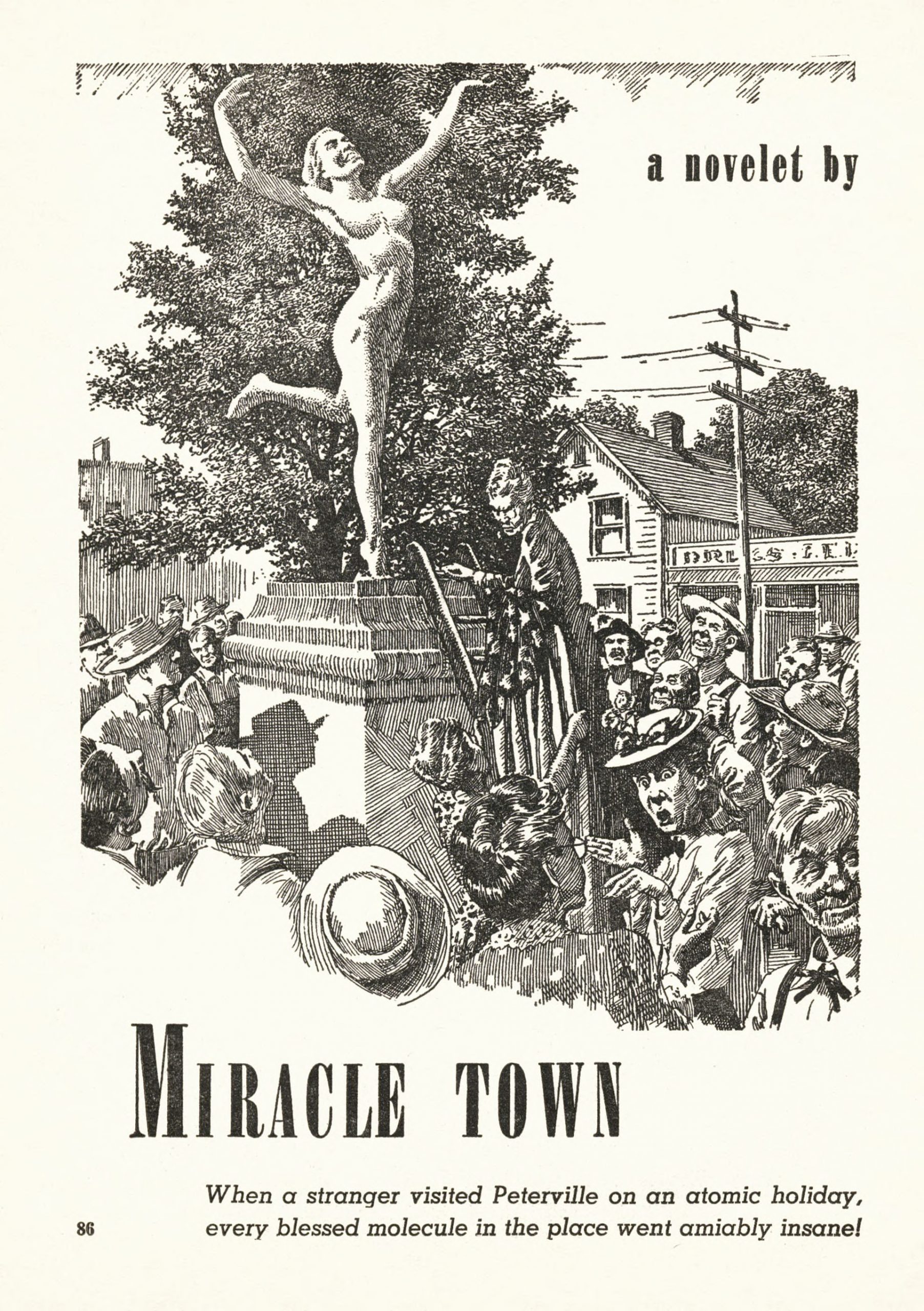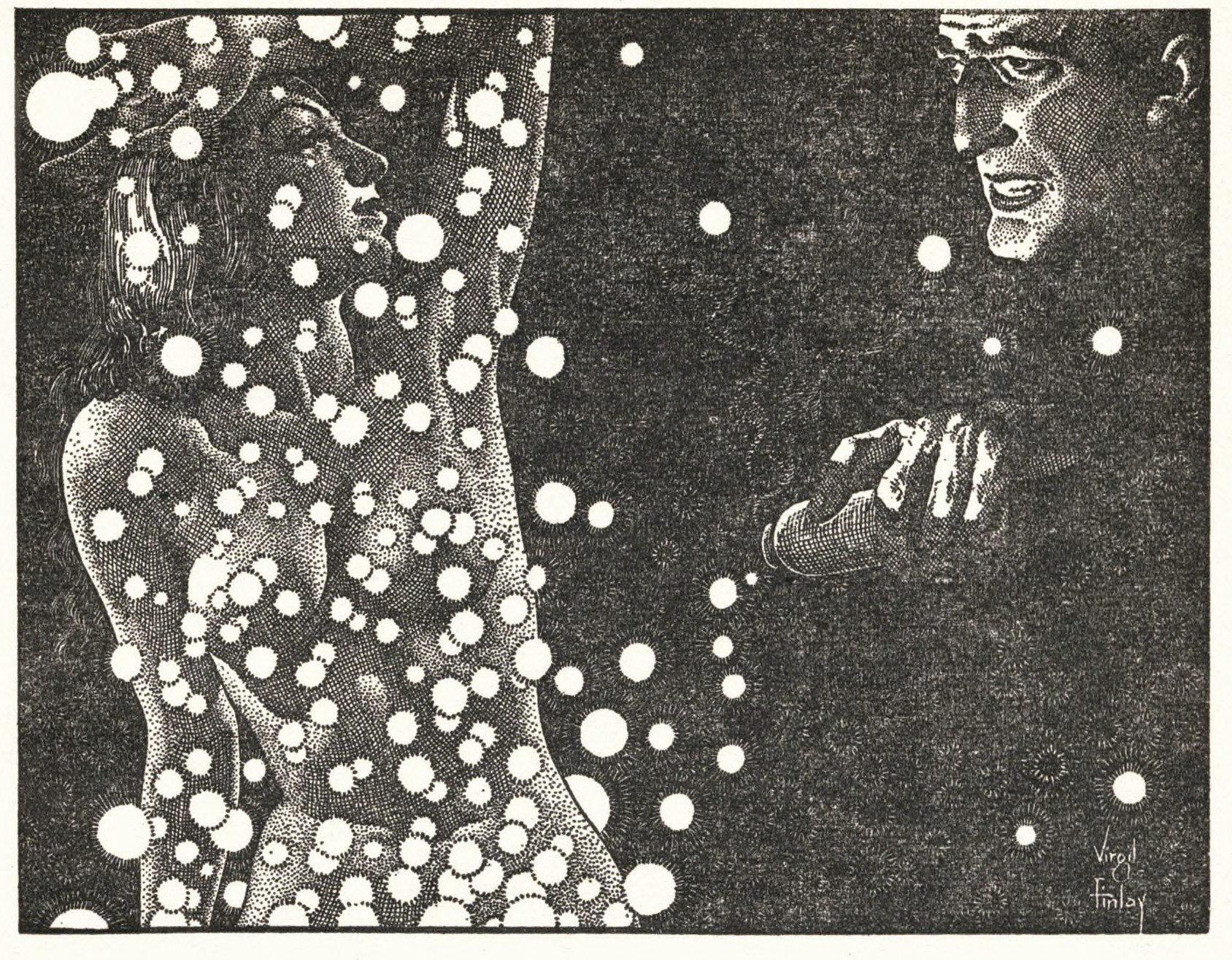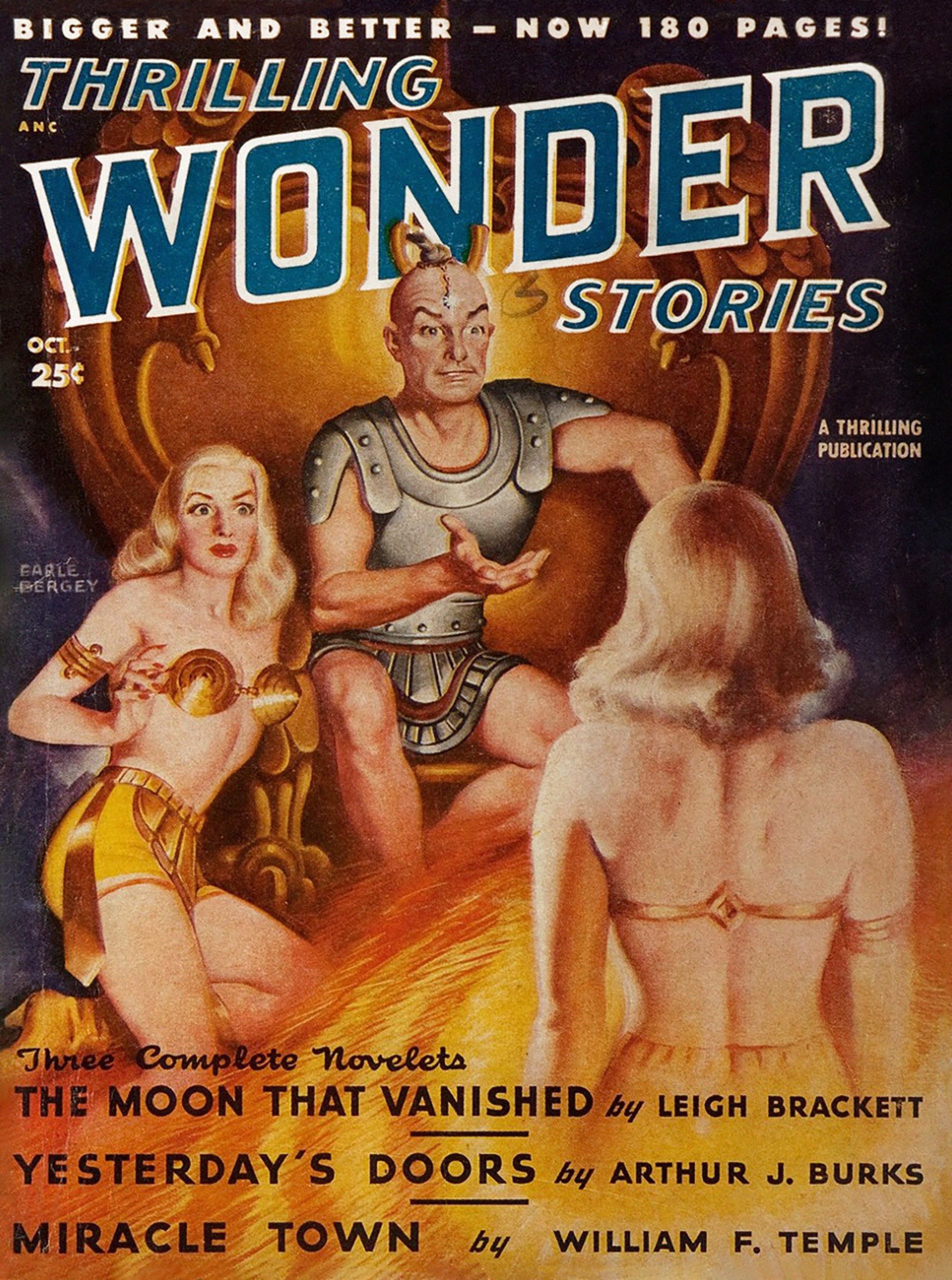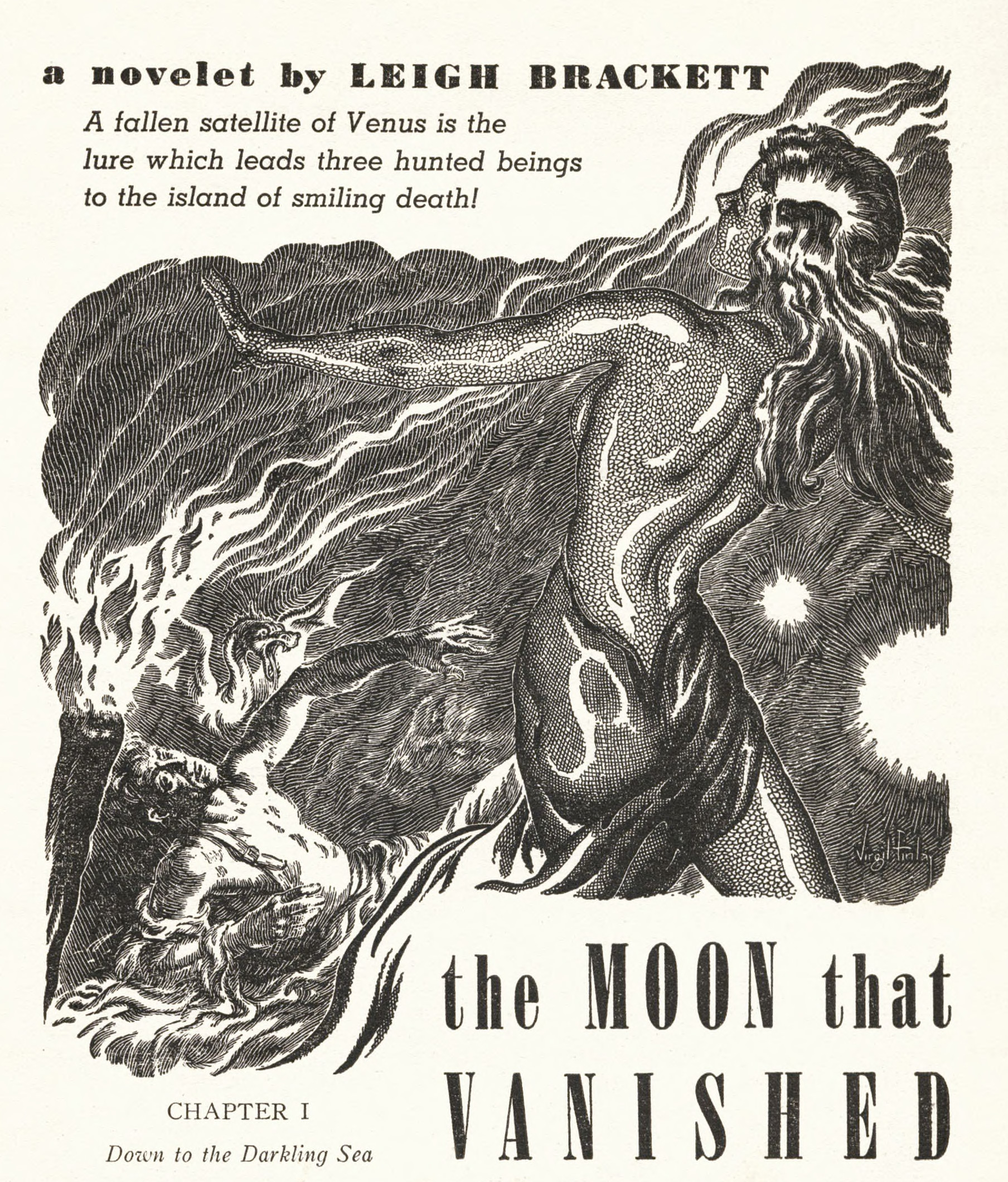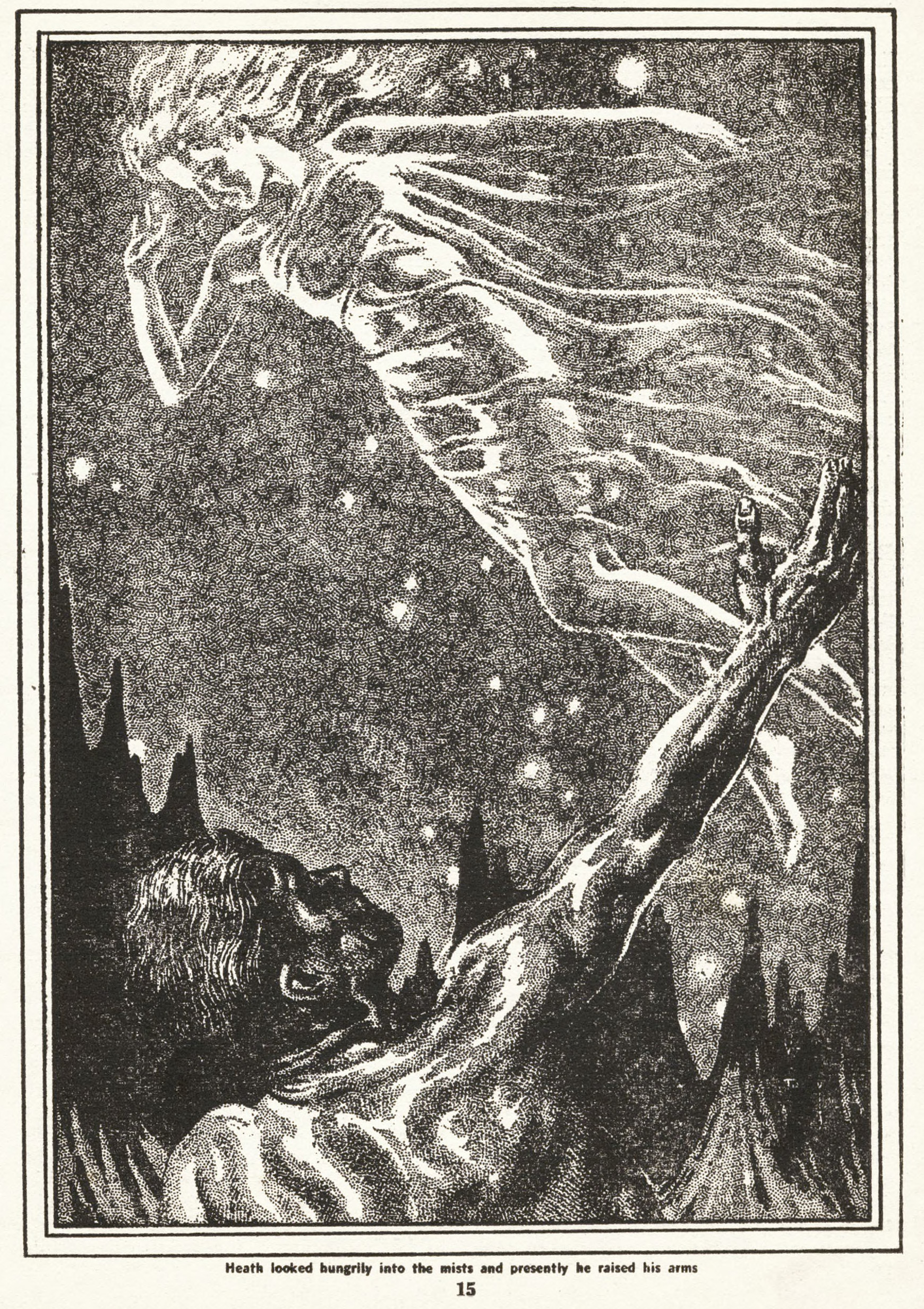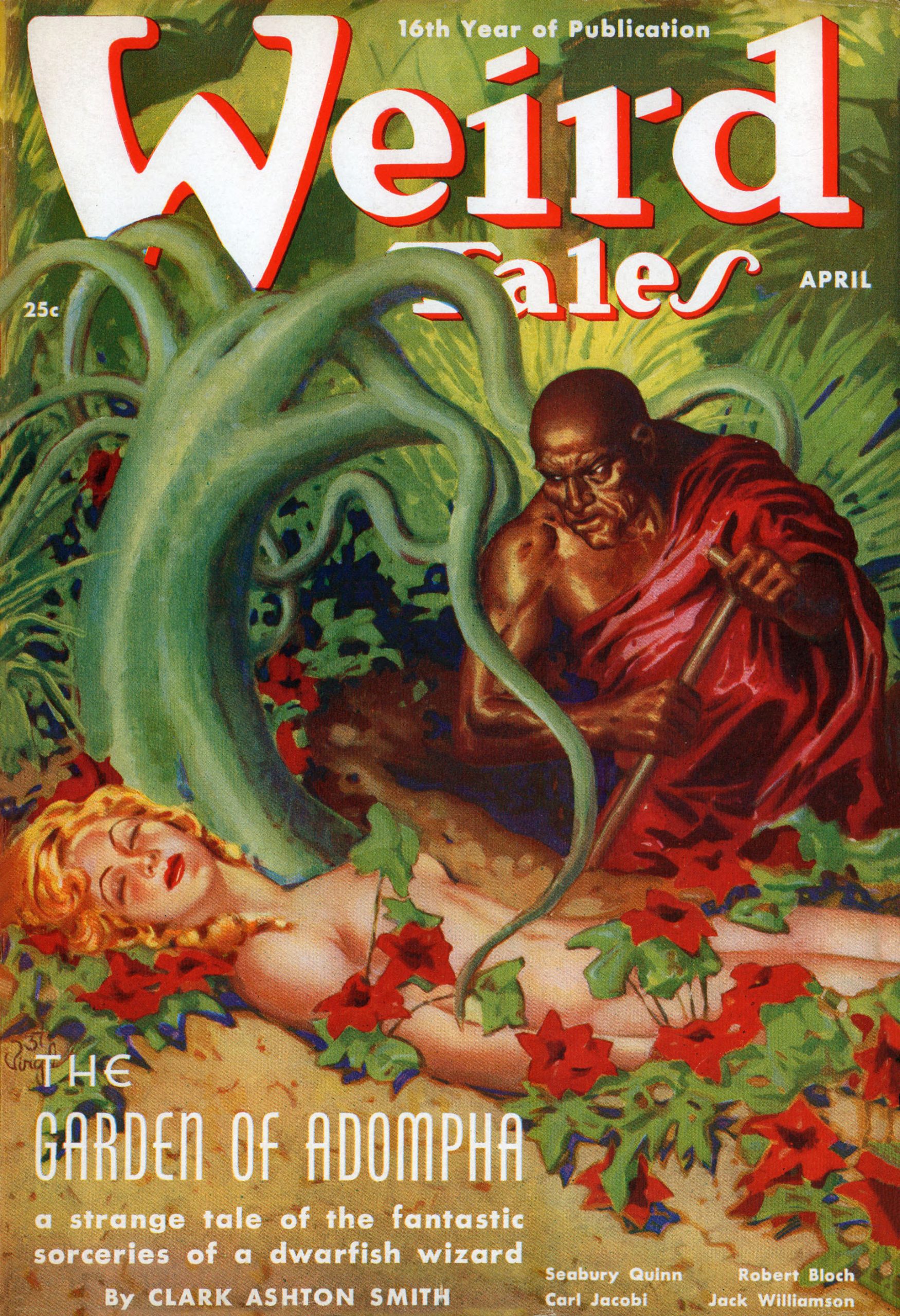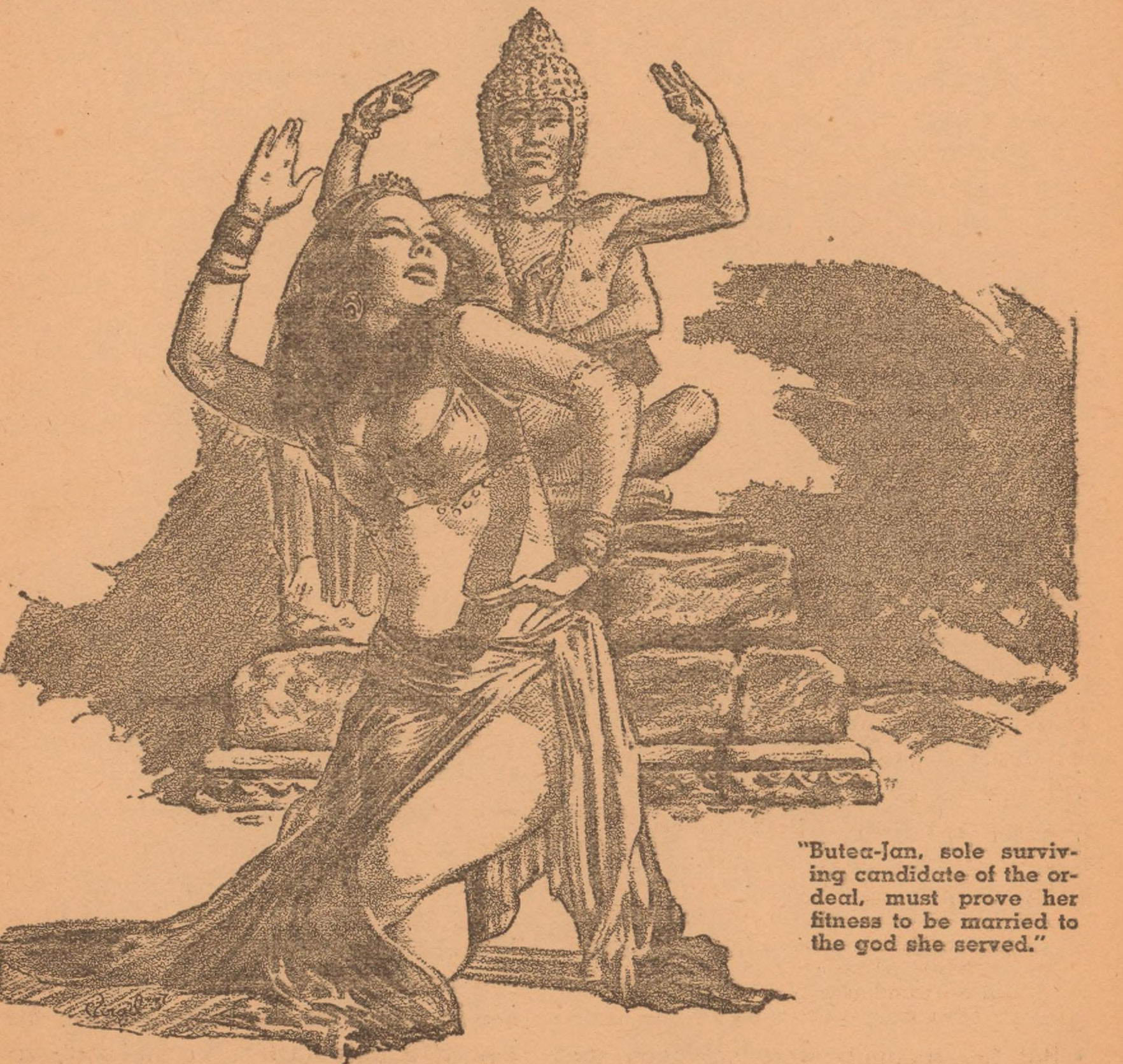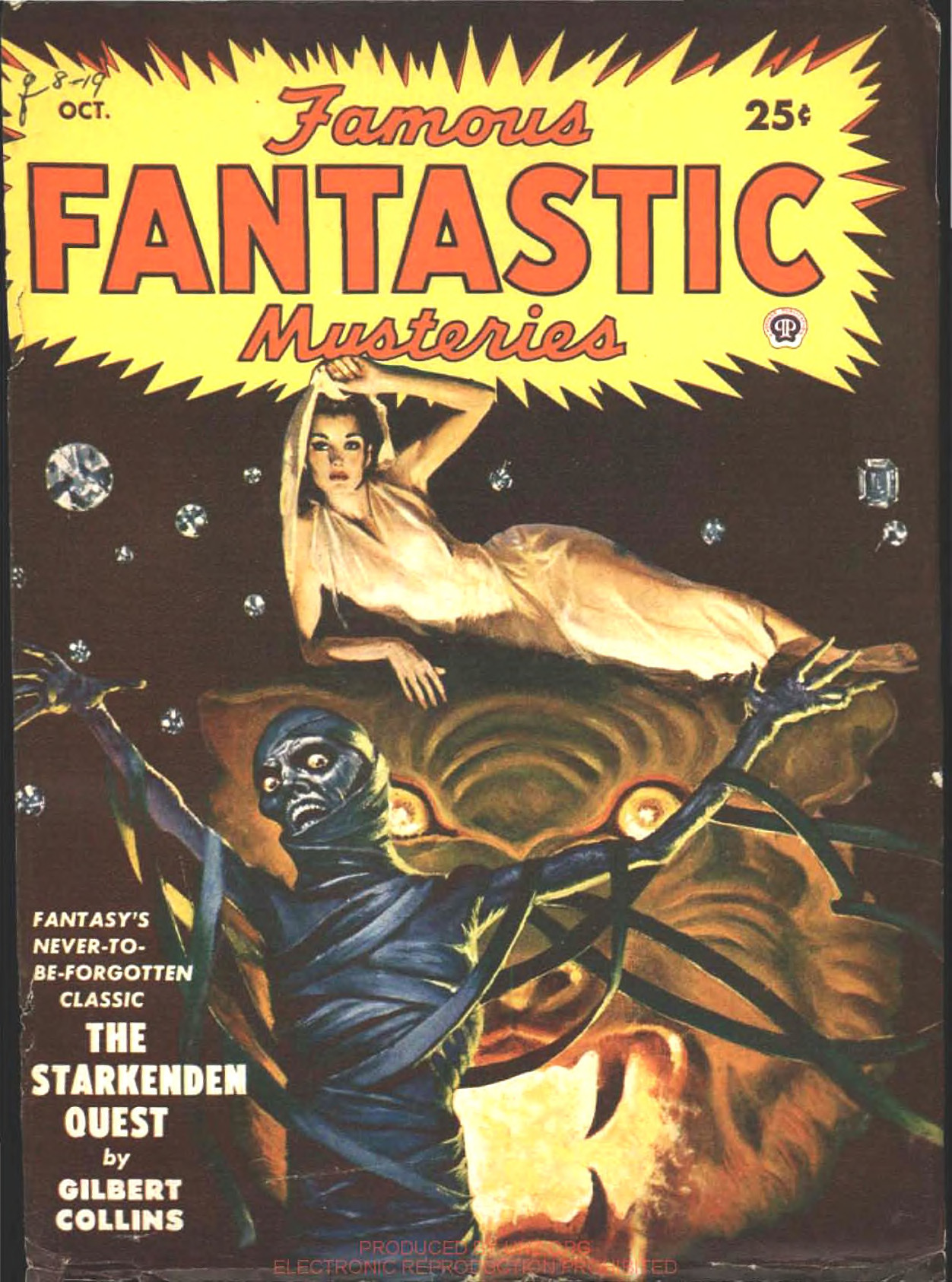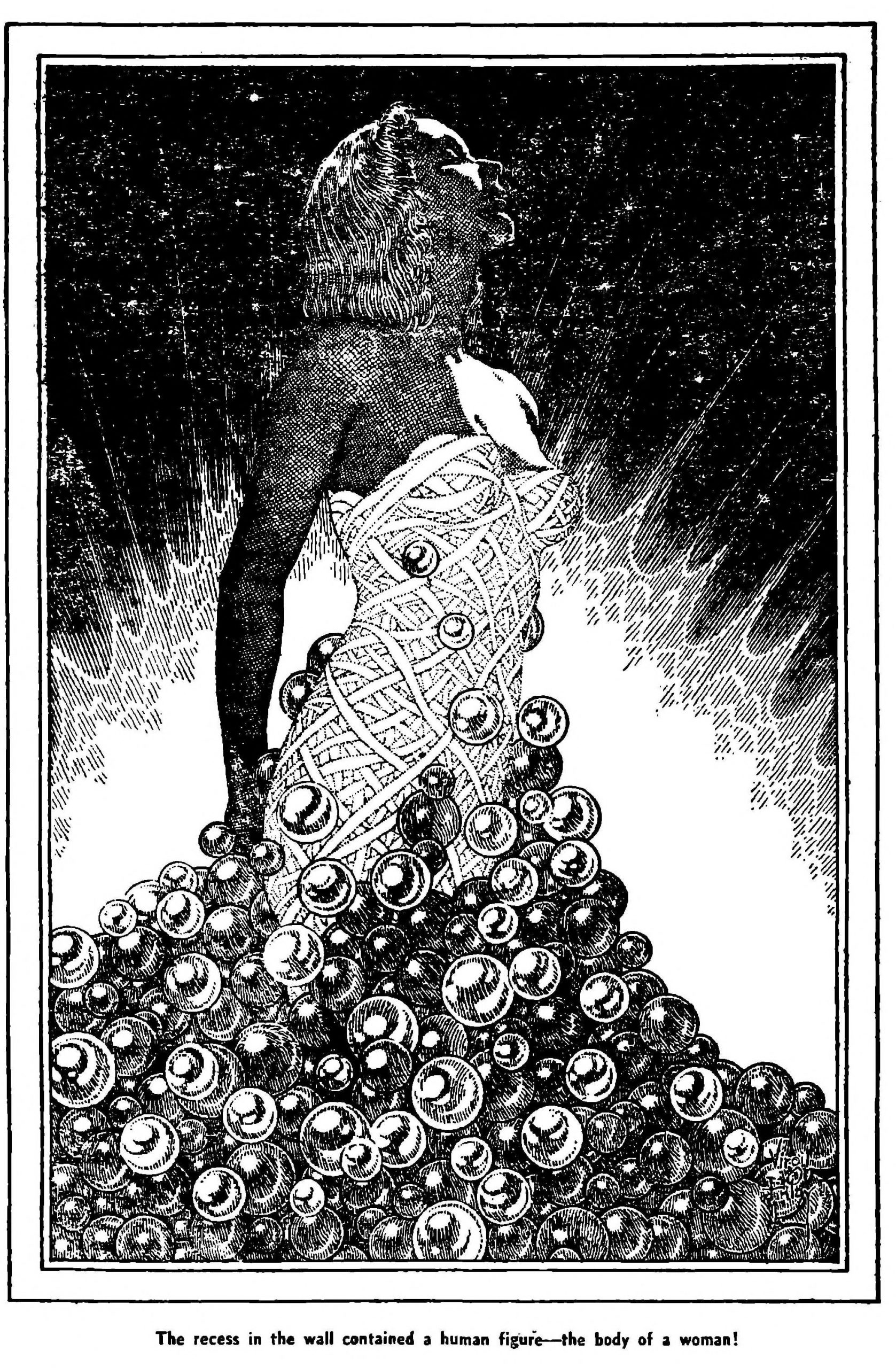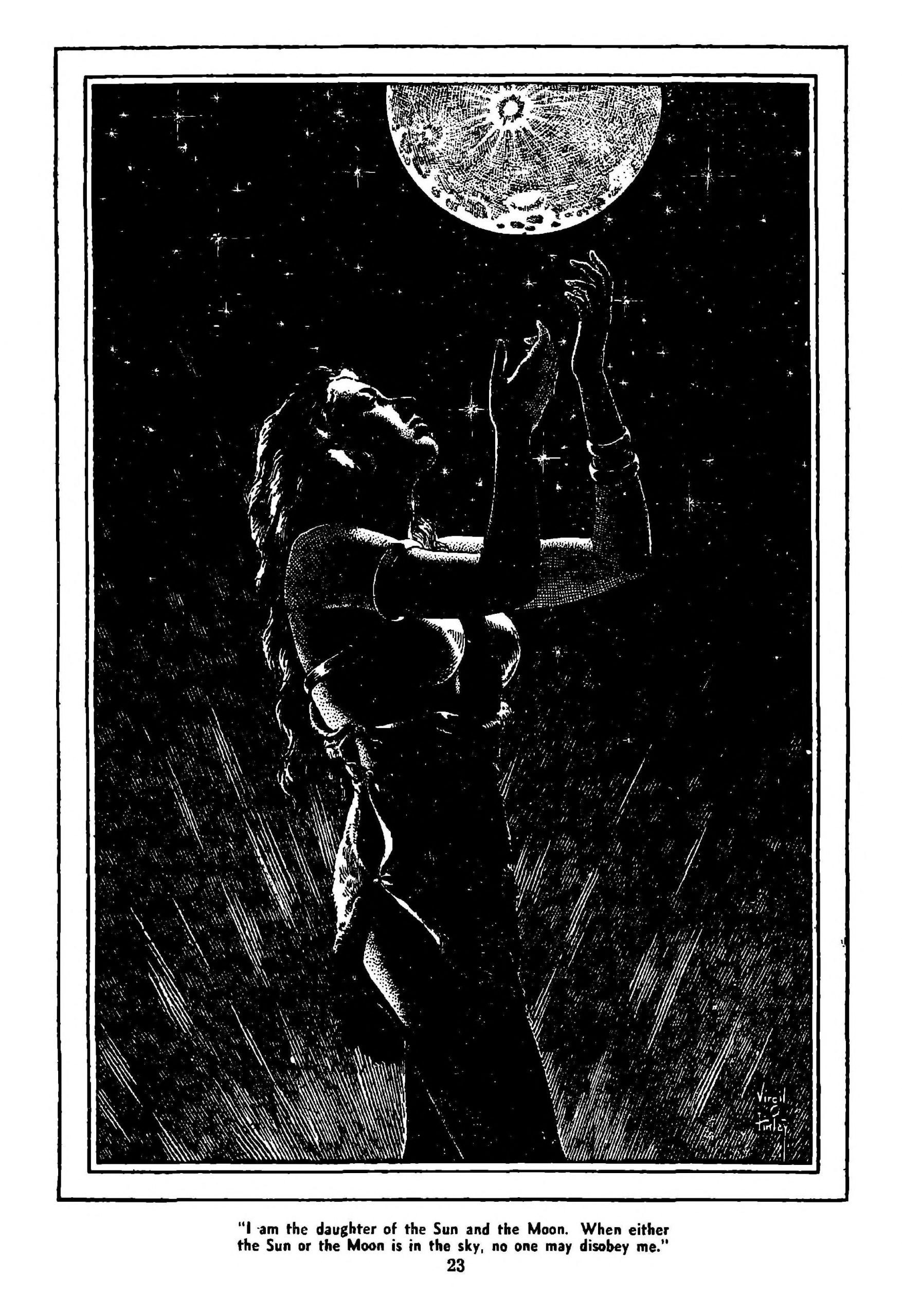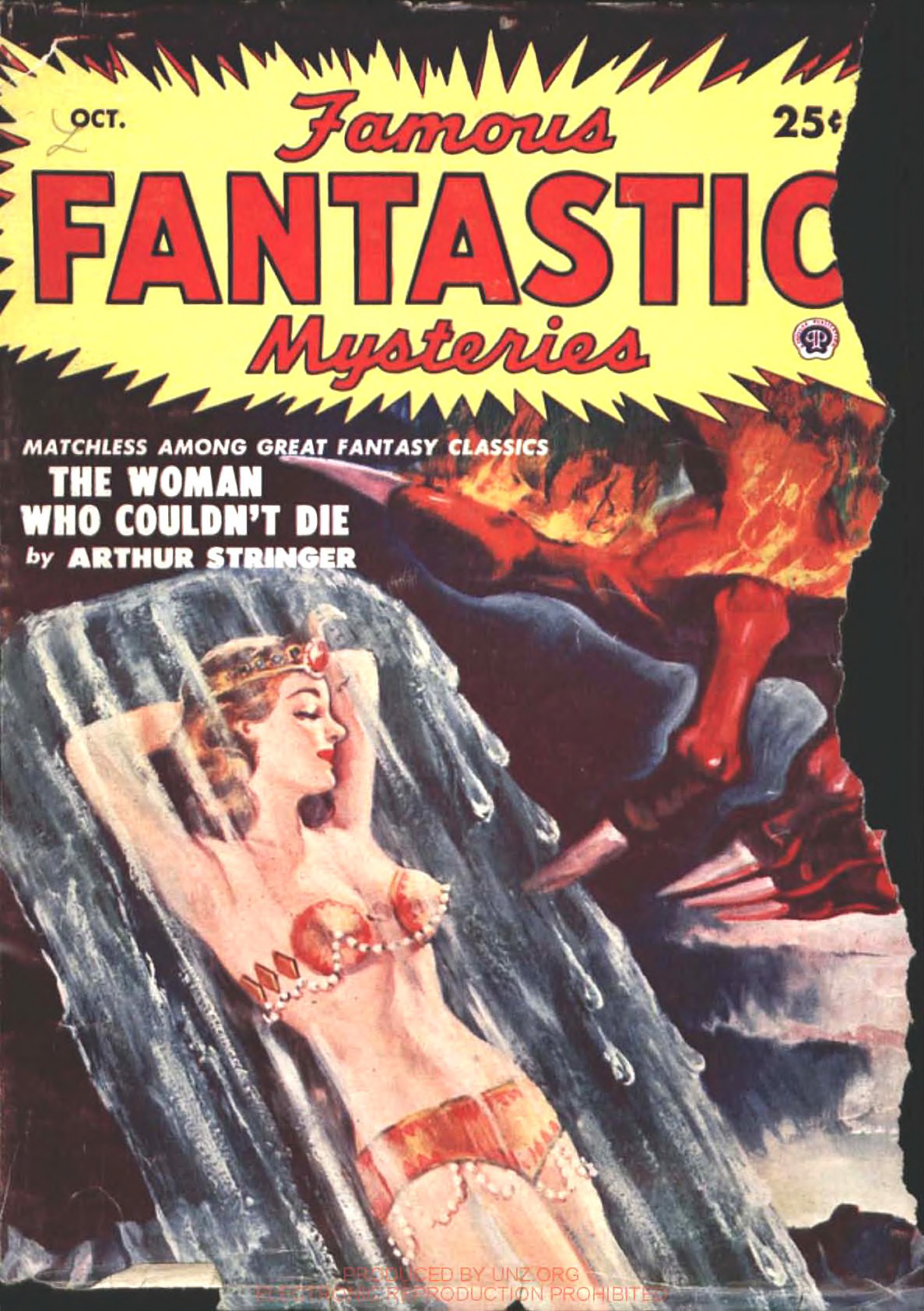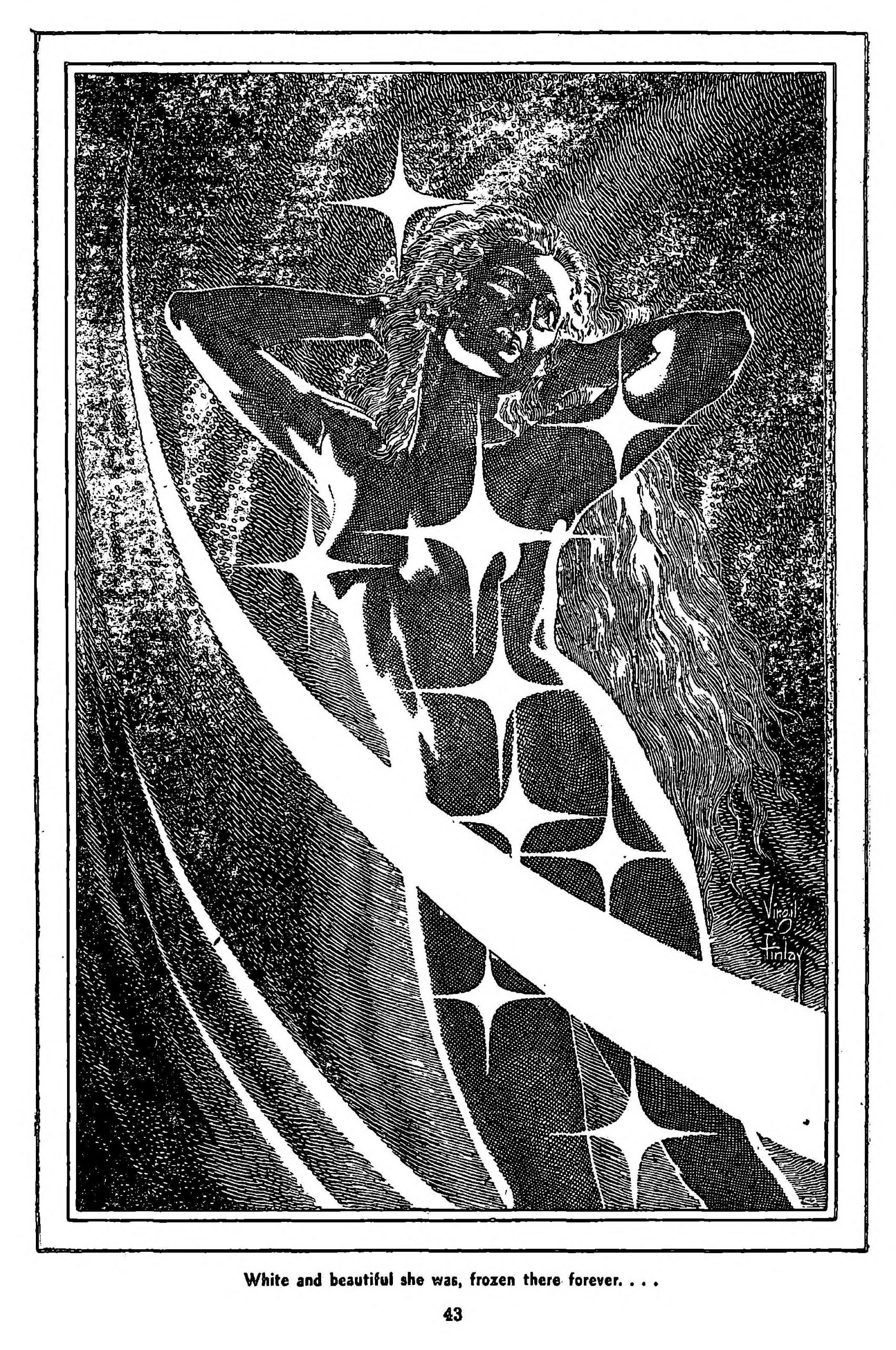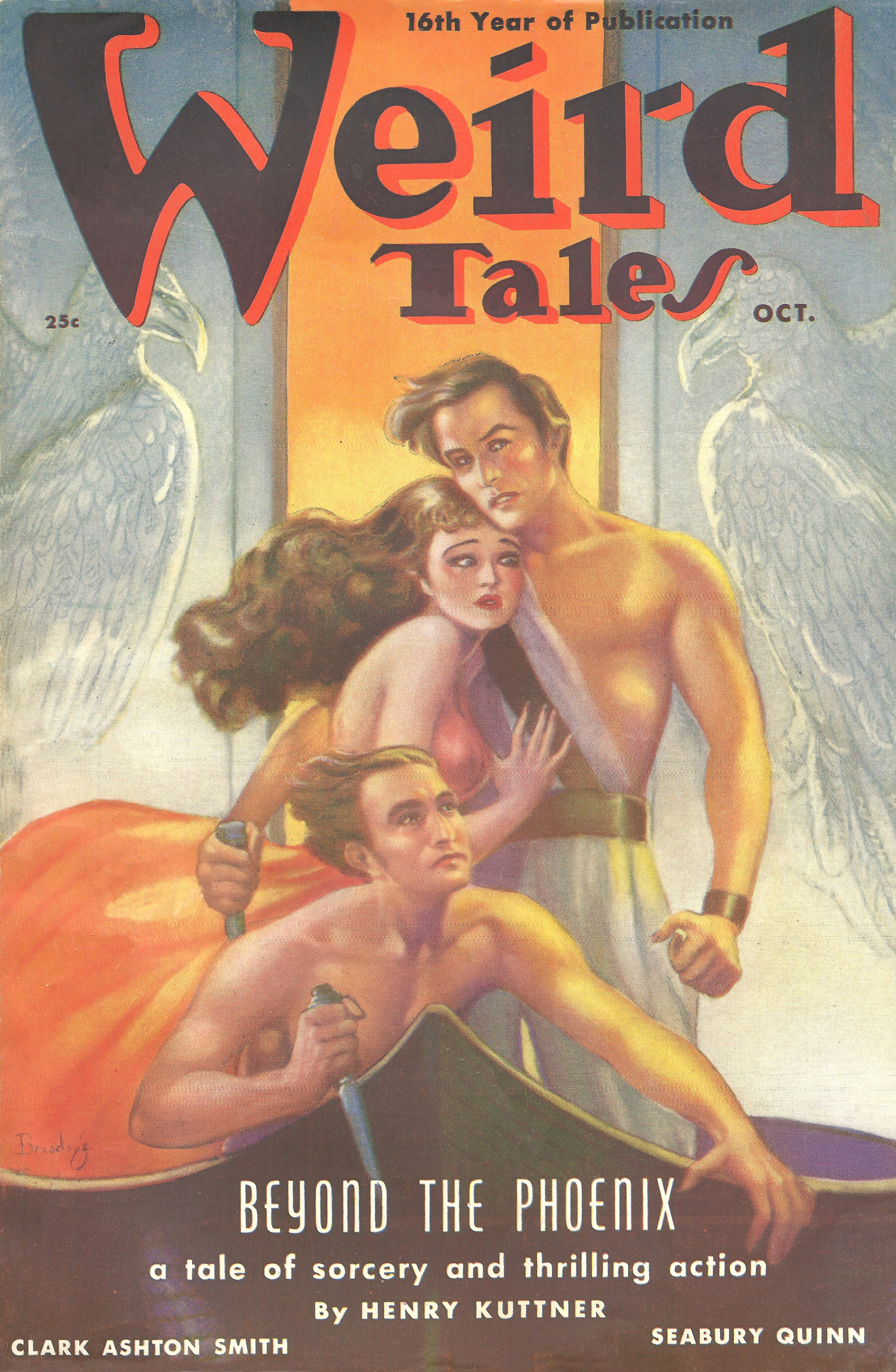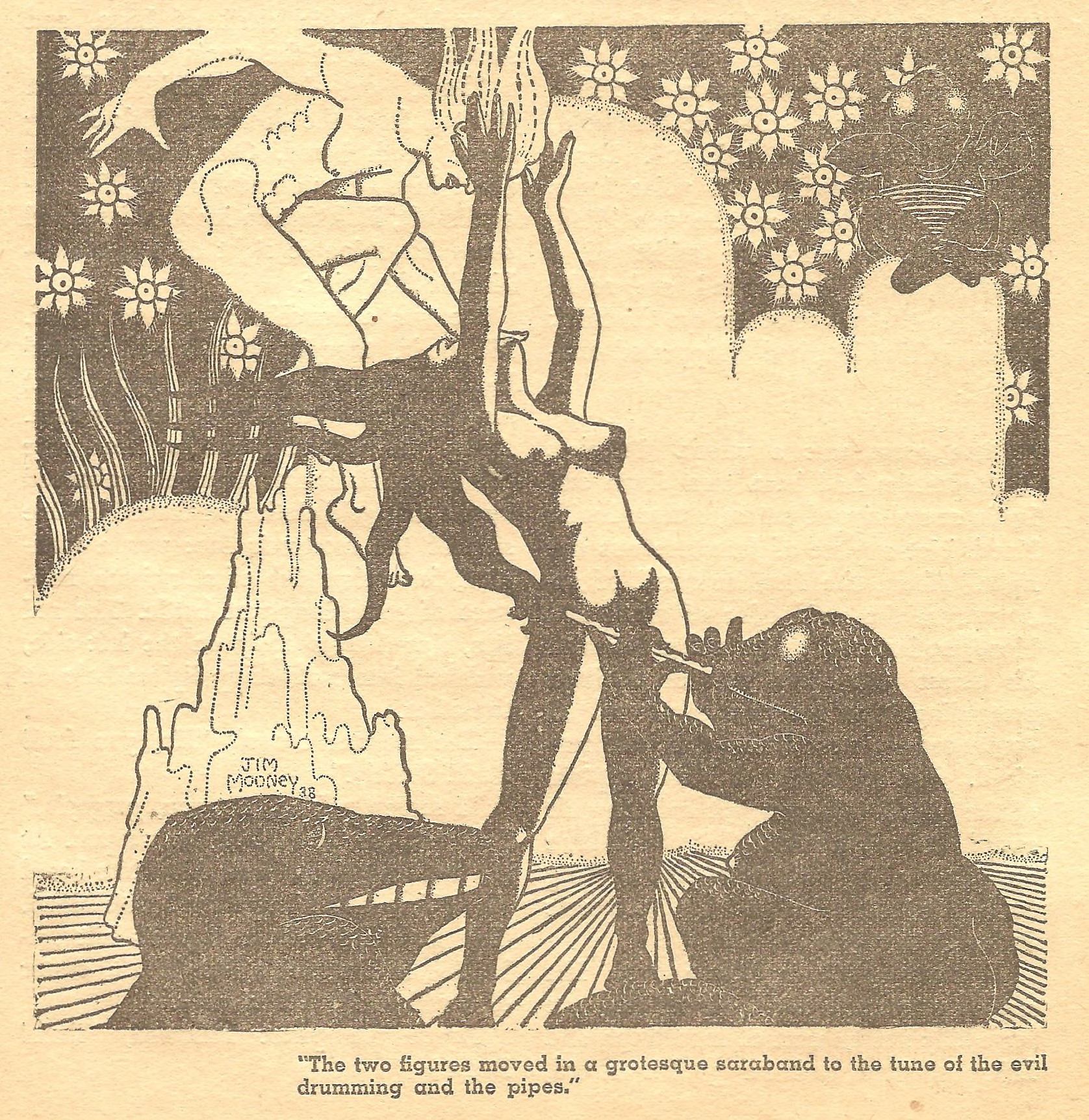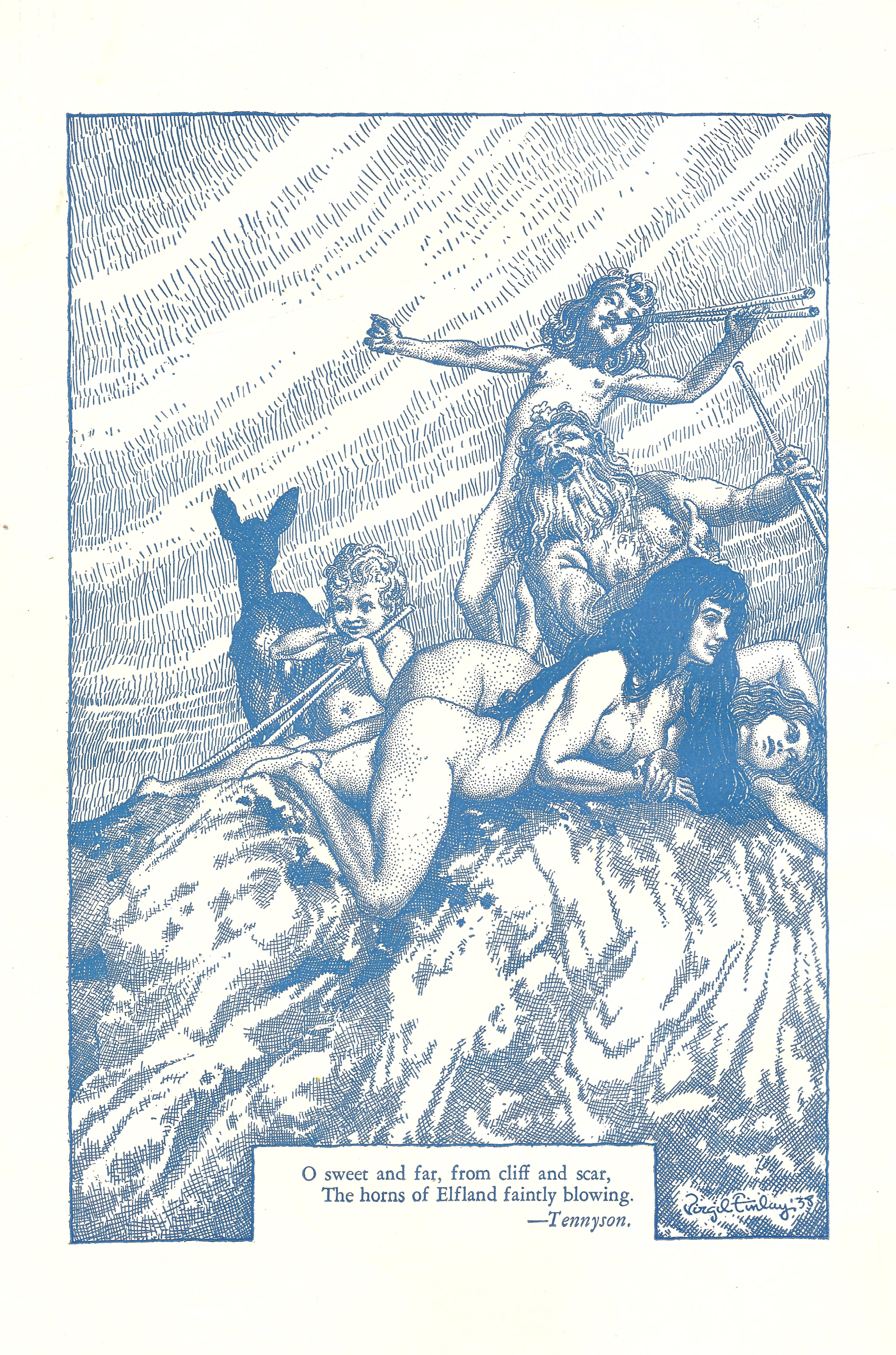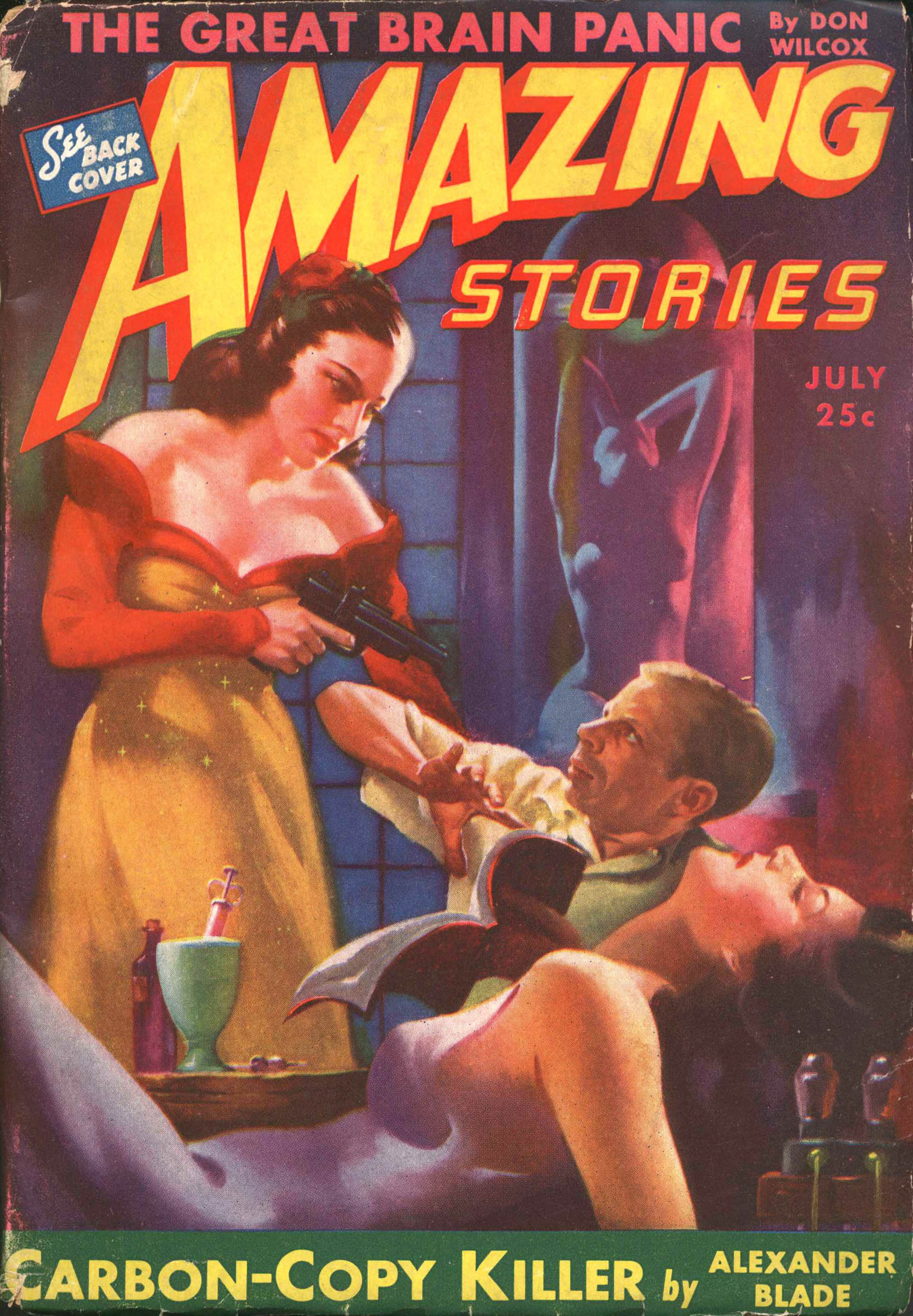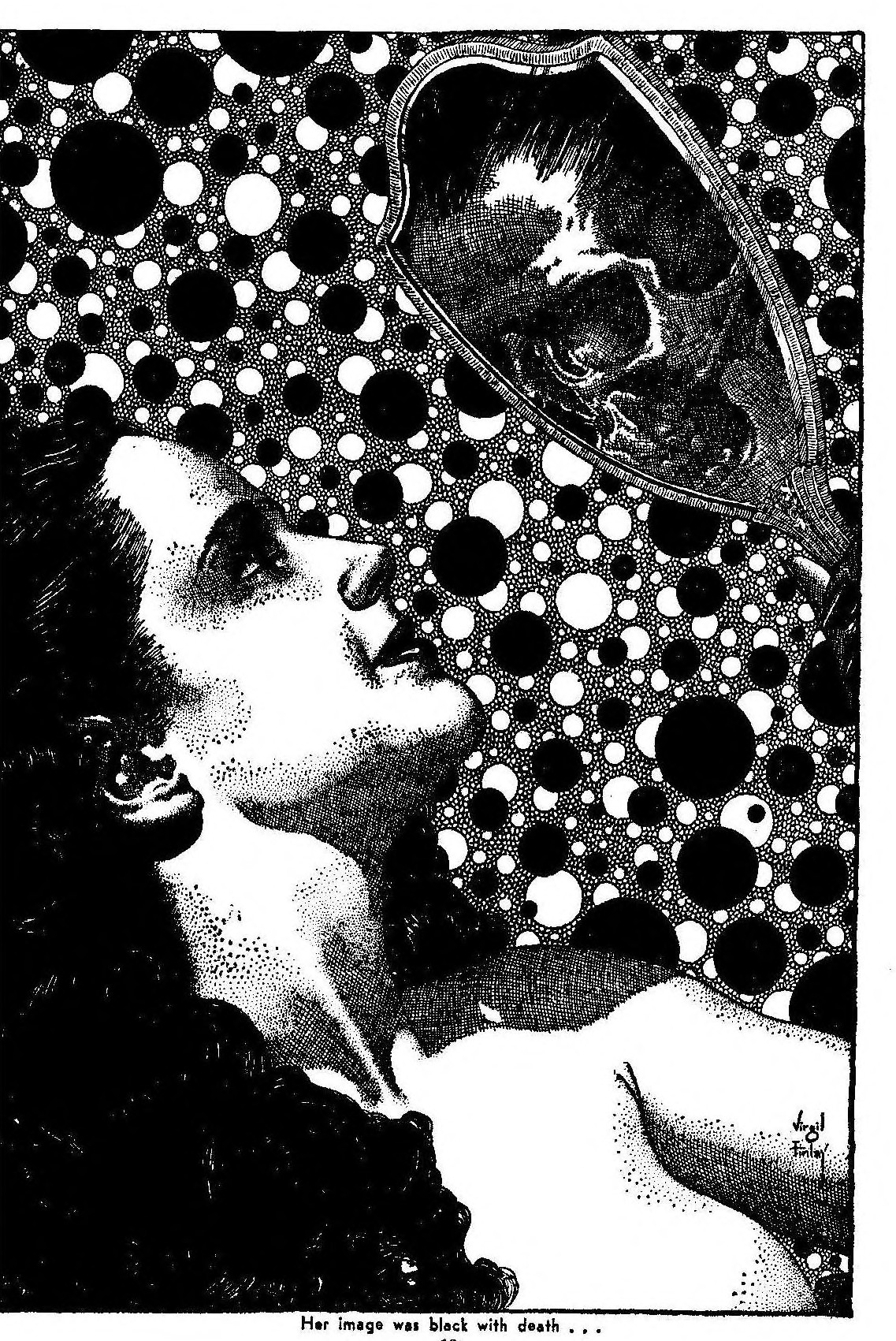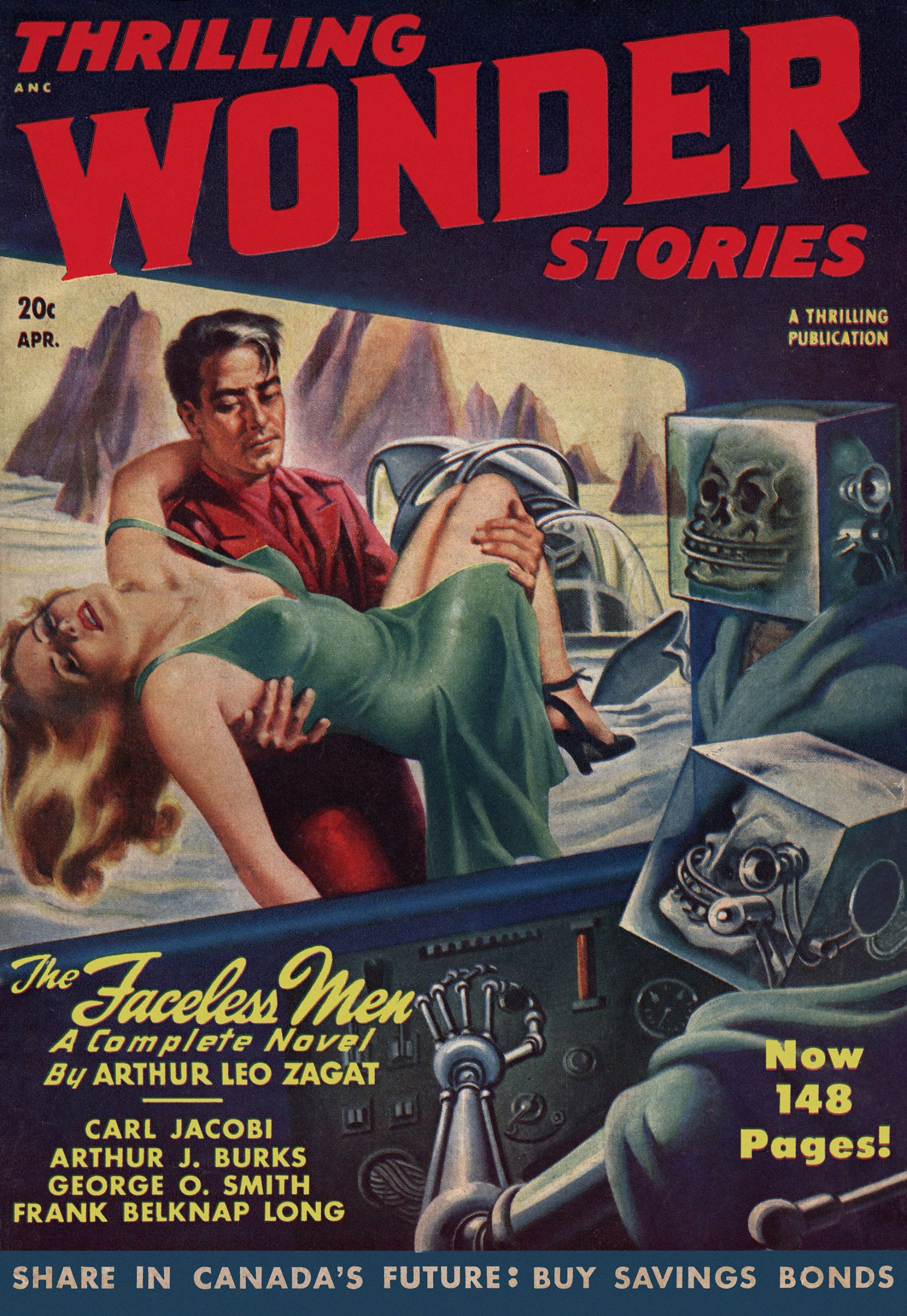
The editors of this April 1948 edition (presumably the Canadian one, which appears to be the same as the U.S. one) may not have had the spectacular luck they would come to have in October, but they still did well, beginning with the cool cover painting above by Earle Bergey.
(Aside: is anyone here old enough to remember flashcubes? Those little shiny plastic disposable cubes you could attach to your camera to generate flashes for home photography? That’s what these weirdos cubic helmets immediately reminded me of.)
Ever-available Virgil Finlay was available for the promoted cover story, “The Faceless Men,” itself penned by the tireless pulp producer Arthur Leo Zagat (1896-1949).
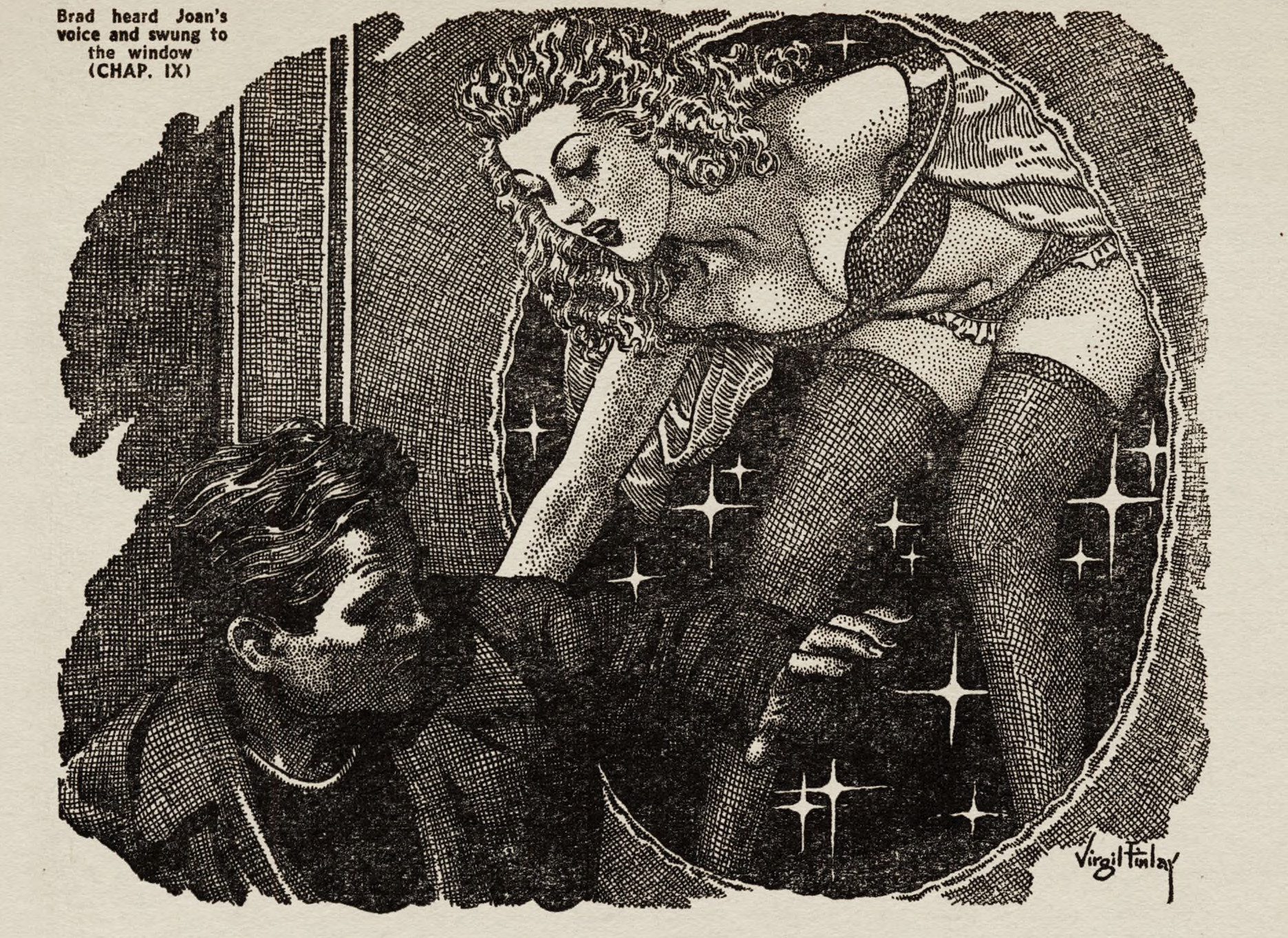
Another example:
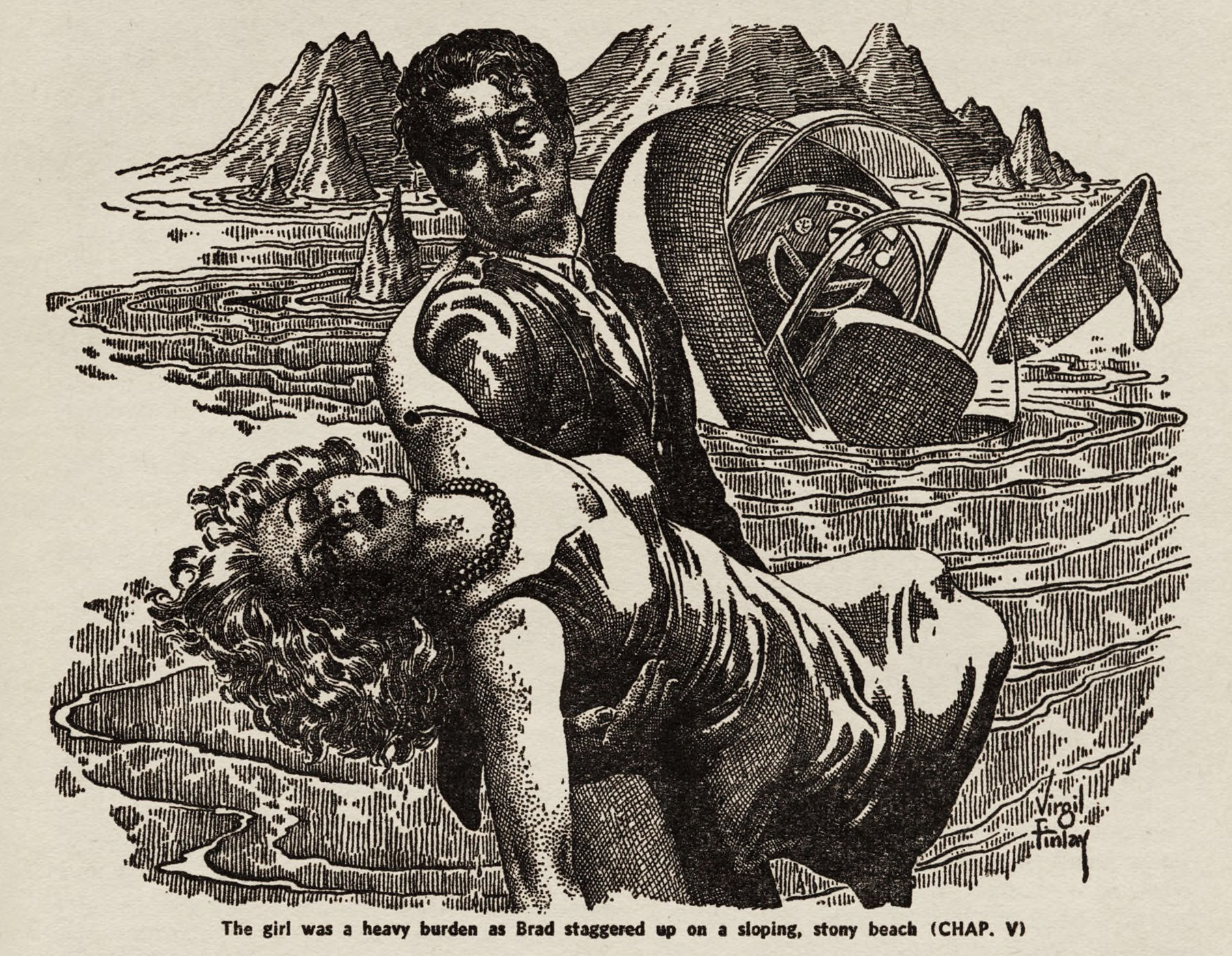
This issue of Thrilling Wonder Stories is available to read and download at the Internet Archive.

